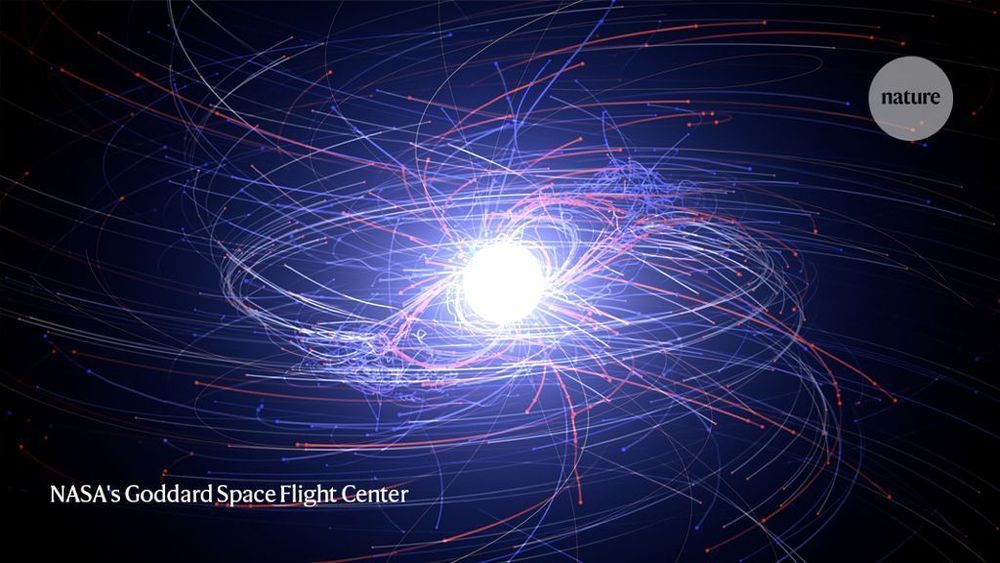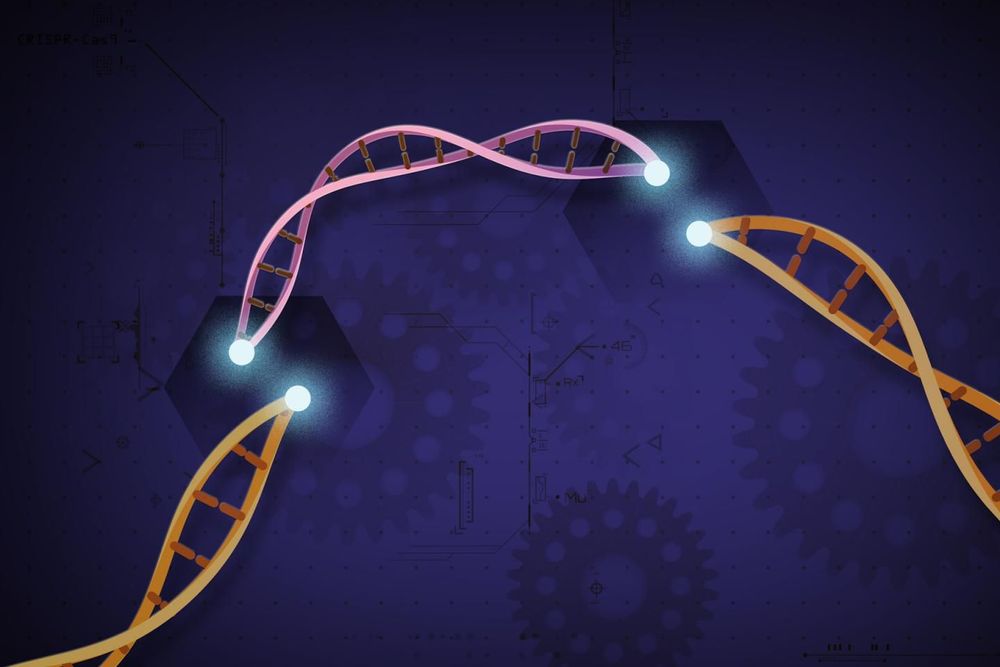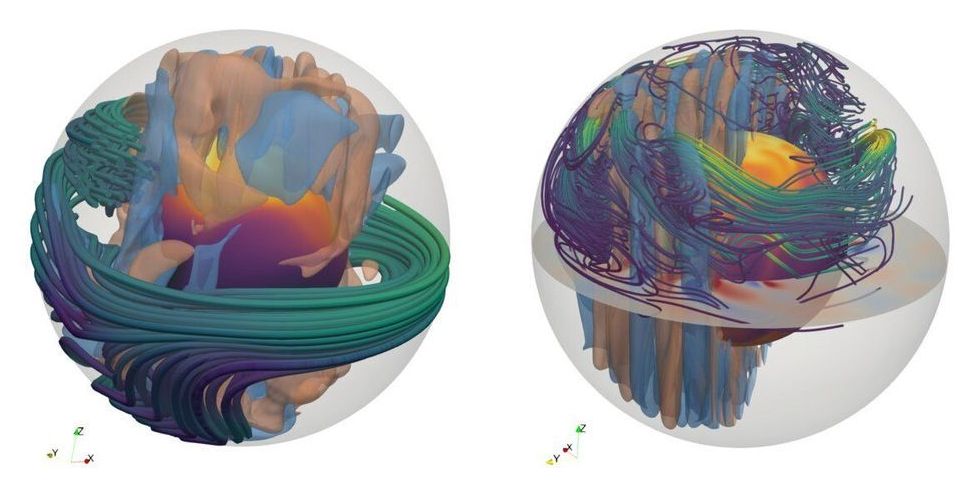What follows is a thread of information, my interpretation, links to sources & predictions. Let’s start with what you need to know… #coronavirus #COVIDー19
Astronomers know that much about how neutron stars are born. Yet exactly what happens afterwards, inside these ultra-dense cores, remains a mystery. Some researchers theorize that neutrons might dominate all the way down to the centre. Others hypothesize that the incredible pressure compacts the material into more exotic particles or states that squish and deform in unusual ways.
Now, after decades of speculation, researchers are getting closer to solving the enigma, in part thanks to an instrument on the International Space Station called the Neutron Star Interior Composition Explorer (NICER).
These stellar remnants are some of the Universe’s most enigmatic objects — and they are finally starting to give up their secrets.
Scientists can now edit multiple sites in the genome at the same time to learn how different DNA stretches co-operate in health and disease.
CRISPR-based DNA editing has revolutionized the study of the human genome by allowing precise deletion of any human gene to glean insights into its function. But one feature remained challenging—the ability to simultaneously remove multiple genes or gene fragments in the same cell. Yet this type of genome surgery is key for scientists to understand how different parts of the genome work together in the contexts of both normal physiology and disease.
Now such a tool exists thanks to the teams of Benjamin Blencowe and Jason Moffat, both professors of molecular genetics at the Donnelly Centre for Cellular and Biomolecular Research. Dubbed ‘CHyMErA’, for Cas Hybrid for Multiplexed Editing and Screening Applications, the method can be applied to any type of mammalian cell to systematically target the DNA at multiple positions at the same time, as described in a study published in the journal Nature Biotechnology.
Because of the central importance of tissue repair to all organisms, Neves assumed that many of the mechanisms behind it would be shared among all animals. So she started looking at proteins produced by immune cells in the well-known animal model of the fruit fly.
She discovered that a poorly-understood protein known as MANF (mesencephalic astrocyte-derived neurotrophic factor) plays a crucial role in reducing inflammation in fruit flies. More importantly, she found that mice and humans also produce it, and its prevalence reduces in all the species as they age, suggesting it plays a key role in limiting age-related inflammation.
That prompted her to see if introducing MANF would boost the effectiveness of stem cell treatments in older animals. She used the protein in combination with a procedure that uses stem cells to replace degenerating photoreceptors in the retina of older mice and found it greatly improved the restoration of vision.
The US is going to lockdown for 15 days to start.
Members of the Trump administration’s coronavirus task force, led by Vice President Mike Pence, hold a press briefing at the White House.
» Subscribe to NBC News: http://nbcnews.to/SubscribeToNBC
» Watch more NBC video: http://bit.ly/MoreNBCNews
NBC News Digital is a collection of innovative and powerful news brands that deliver compelling, diverse and engaging news stories. NBC News Digital features NBCNews.com, MSNBC.com, TODAY.com, Nightly News, Meet the Press, Dateline, and the existing apps and digital extensions of these respective properties. We deliver the best in breaking news, live video coverage, original journalism and segments from your favorite NBC News Shows.
Magnetars are neutron stars endowed with the strongest magnetic fields observed in the universe, but their origin remains controversial. In a study published in Science Advances, a team of scientists from CEA, Saclay, the Max Planck Institute for Astrophysics (MPA), and the Institut de Physique du Globe de Paris developed a new and unprecedentedly detailed computer model that can explain the genesis of these gigantic fields through the amplification of pre-existing weak fields when rapidly rotating neutron stars are born in collapsing massive stars. The work opens new avenues to understand the most powerful and most luminous explosions of such stars.
Magnetars: what are they?
Neutron stars are compact objects containing one to two solar masses within a radius of about 12 kilometers. Among them, magnetars are characterized by eruptive emission of X-rays and gamma rays. The energy associated with these bursts of intense radiation is probably related to ultra–strong magnetic fields. Magnetars should thus spin down faster than other neutron stars due to enhanced magnetic braking, and measurements of their rotation period evolution have confirmed this scenario. We thus infer that magnetars have a dipole magnetic field of the order of 1015 Gauss (G), i.e., up to 1000 times stronger than typical neutron stars! While the existence of these tremendous magnetic fields is now well established, their origin remains controversial.
Australian supermarket giant Woolworths is introducing a dedicated shopping hour that will only allow elderly and disabled people to purchase items.
Starting tomorrow (March 17) shopping between 7 am and 8 am will be exclusive to elderly and disabled people with government-issued disability and pension cards.
These actions are a direct response to the chaotic panic buying and hoarding of essential items by other greedy shoppers which has left older people struggling to get their hands on food and toiletries.
Lyme disease is an infectious condition spread by ticks that affects as many as 300,000 people in the US every year, according to the Center for Disease Control and Prevention. Today’s treatment is largely effective in treating the infection, but a good portion of patients do not respond and go on to endure lingering symptoms. A new study has revealed that an already-approved antibiotic can completely eliminate the underlying bacteria that causes the disease in mice, offering new hope of a more comprehensive therapy for humans.
While the standard antibiotics used to treat Lyme disease do the job for the majority of patients, somewhere between 10 and 20 percent go on to experience its symptoms. These include muscle pain, fatigue, fever, headaches and heart problems. There are couple of theories for why this might be.
“Some researchers think this may be due to drug-tolerant bacteria living in the body and continuing to cause disease,” said study author Jayakumar Rajadas. “Others believe it’s an immune disorder caused by bacteria during the first exposure, which causes a perpetual inflammation condition. Whatever the cause, the pain for patients is still very real.”









